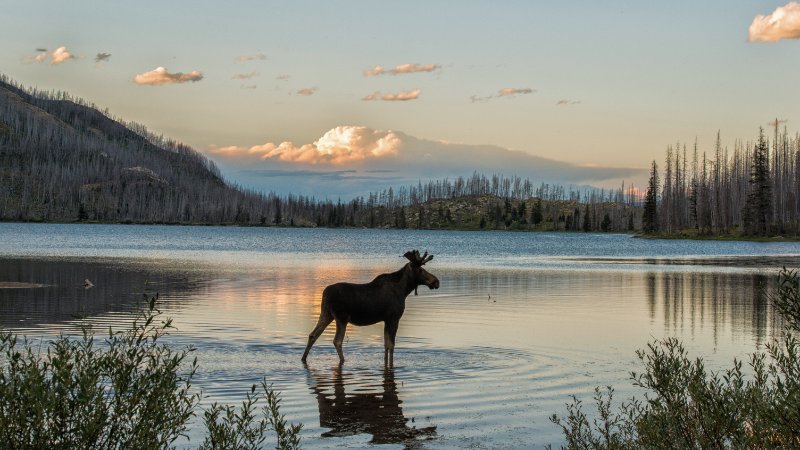“The Great Wilderness: Exploring the Majestic Moose Habitat”
Meet the Majestic Creature of the Wilderness: The Moose
In the wilderness of North America resides the largest of all native land animals – the moose. Calling the northernmost parts of the continent home, their habitat spans from coastal Alaska to the deciduous forests of New England, and from the chilly wilderness of Canada to the high altitudes of the Rockies.
Tracing Their Tracks: Uncovering the Secrets of the Moose Habitat
Moose habitats are known for their rich diversity of vegetation. The primary diet of these magnificent creatures includes twigs, shrubs, and a variety of both hard and softwood trees. The dietary favorites that define a perfect moose habitat includes:
- Willows
- Birches
- Aspens
- Firs
- Maples
A Seasonal Taste: From Summer to Winter
Interestingly, while you’ll find moose savoring the above-mentioned trees during the spring and summer, they switch their palate to the bark of maple and aspen trees around fall, and finally to the buds and new-grown branches in winter.
These impressive mammals also prefer sodium-rich aquatic plants and can be often seen around the marshlands, wading in the water. Moose also have a strange liking to the salt accumulated on roads and highways – a source of essential minerals for their diet.
Home Open Home: Moose love for Open Spaces
A unique characteristic of the moose habitat is the preference for open spaces. Contrary to popular belief, moose are not big on areas overly dense with vegetation. The reason behind it is simple; they require easy mobility & clear visibility for spotting potential danger.
After the Fire: How Disasters Shape the Moose Habitat
Certain natural disasters like forest fires and floods encourage the growth of the kind of vegetation that moose relish. Post-disaster, forests are often teeming with new life, which includes our beloved willows and other shrubs that help nourish the moose.
Adaptability: Moose and the Seasonal Changes
Summer and winter conditions hugely affect the moose habitat. Summers ought to be abundant in full foliage near the marshlands, while winters – preferably with less deep snow – enable easier mobility and accessibility to food sources.
Wrapping up, the ideal moose habitat isn’t that complicated. It involves an area rich in the right vegetation, abundant in sodium sources, and is relatively open for easy movement. You’ll typically find these impressive beasts anywhere they can roam freely.
Related Reads:
Ready to dive deeper into the fascinating world of moose and their habitats? Use the search bar to explore more exciting topics.

